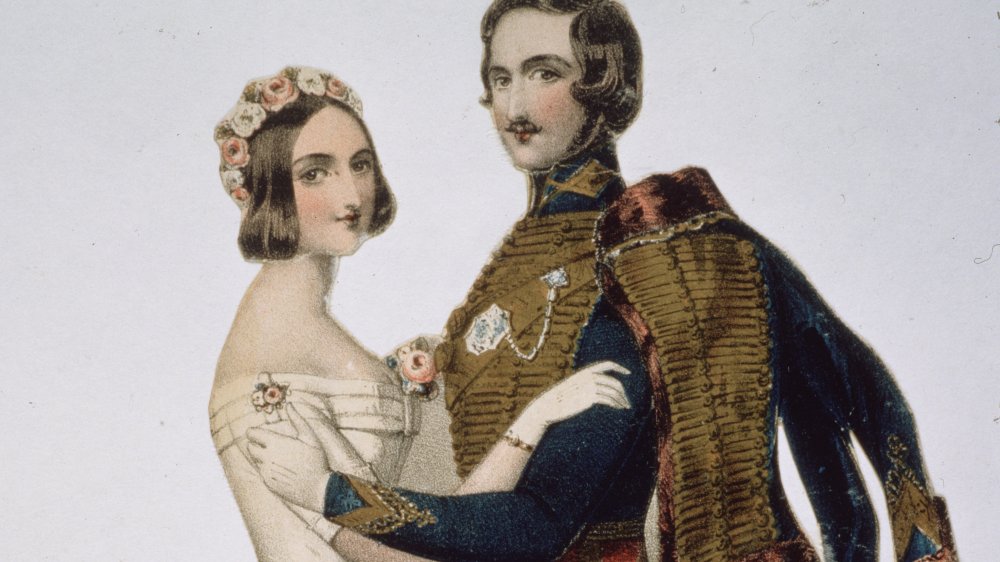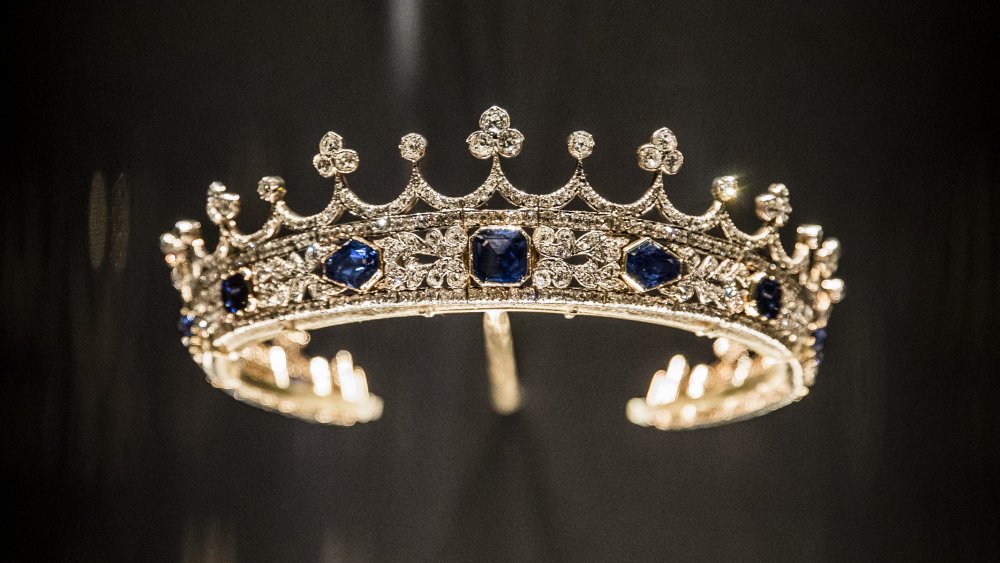The Story Behind Queen Victoria's Favorite Piece Of Jewelry
Some things are hard to rank. For instance, your favorite child. (All of them.) Best ice cream. (All of them.) The principal probably applies to royalty, too — they're just like the rest of us (not all of them, but mostly) and must have some preferences. Depending on the royalty, and at which point in history, a monarch might enjoy one colony more than another. India was often referred to in England as "the jewel in the crown." And speaking of England, and jewels, and crowns, do you suppose Queen Victoria had a favorite piece of bling?
She certainly had oodles from which to choose. Victoria's jewelry collection was impressive as well as valuable — lots of precious stones and metals, of course. But the more interesting part of Victoria's taste could be measured in sentimentality, rather than carats. Sotheby's auction house tells us that one of her first pieces of jewelry was a locket, given to her as a child by her mother, which contained a lock of hair from Victoria's deceased father. When Victoria became engaged to Prince Albert, she asked for a lock of his hair, too (though judging from the portraiture, he didn't have a lot to spare) which she wore in a glass, heart-shaped pendant nearly every day for the rest of her life. Her collection even included pieces featuring pebbles from her estate at Balmoral, Scotland, polished and set in silver. It's clear that for Victoria, jewelry was symbolic and reflected relationships and associations.
Both coronet and tiara
Based on that, the argument could well be made that her favorite piece was actually one of several items designed for her by husband, Albert. The coronet (pictured), a kind of small crown, is a clever piece of design, too, described in The New York Times as just four-and-a-half inches in length. It has 23 hinged sections, which allow it to function as either a closed coronet or as an open tiara. "It flows through the hand like silk," said William Bollinger, a hedge-fund millionaire who purchased and donated it to Victoria and Albert Museum in 2017. Sapphires and diamonds predominate.
After Albert's premature death at age 42, Victoria rarely wore colored stones — she dressed in black for the rest of her life — but made an exception, wearing this piece designed by her beloved husband when she opened parliament the first year after his death. She also wears it in an 1874 portrait, anchoring her widow's veil, 13 years after Albert died.

